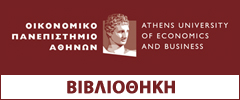| Abstract : | In the present dissertation, mutual funds will be analyzed through theoretical and empirical approach. First, we state some basic information about mutual funds, such as their history and kinds, whereas after this, we analyze the multiple ways of evaluating a fund.In theoretical approach, we state the risk measurement indicators, such as the Beta coefficient, R-squared, Alpha, Variance-Cocariance method and more. Then, we move to the analysis of the basic performance measurement indicators, which are the Treynor’s indicator, Jensen’s and Sharpe’s indicator. Also, having analyzed them,we move to a deeper analysis, adding more indicators, such as the Treynor-Mazuy indicator, the Busse indicator, Fabozzi-Francis model and much more. Also, in the end of this approach, we state the two market models, the Capital Asset Pricing Model (CAPM) and the Arbitrage theory model.Moving to the empirical approach, we start by building a sample of 30 Closed-End Equit US funds, observing them in monthly basis, for the time period 01/01/2001-12/31/2014. That means that our sample, consists of 5,040 observations, whereas we have also the monthly returns of the S&P500 index, and the treasury bills rates for the same period, which had been used as the risk free rate.In the begining, we will evaluate the funds for the time period 01/01/2001-12/31/2011, by regressing the CAPM model Ri,t = ai + biRm,t + εi in order to estimate the risk of each fund. Then, using the Treynor-Mazuy formula Ri,t − Rf,t = ai + bi(Rm,t − Rf,t) + ci(Rm, t − Rf,t)2 + εi, we will estimate the selectivity (ai) and the market-timing (ci) of each fund. The best funds of this period, will be evaluated separate out of sample, for the period 01/01/2012-12/31/2014, in order to test their ability to remain the best. Also, we will build a portfolio consisting of these funds, which will be evaluated for the same period, and for the whole period as well.In the end, we will try to state our conclusions of the results we will get in each level.
|
|---|







 Copyright © 2013 Library AUEB. All rights reserved.
Copyright © 2013 Library AUEB. All rights reserved.